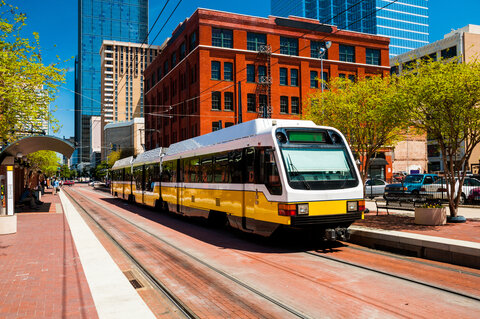
Marc Joffe
Mecklenburg County residents in North Carolina have been paying a 0.5 percent transportation sales tax since 1999. Now local leaders would like to triple that tax, thereby raising the total sales tax Charlotte consumers pay to 8.25 percent. If approved by the state legislature and voters, the new tax revenue would fund an expensive new transit line and other projects. While a growing area like Charlotte/Mecklenburg needs more transportation infrastructure, a new commuter rail line, funded by taxpayers, is probably not the most cost-effective solution.
The proposed rail service, named the Red Line by the Charlotte Area Transit System (CATS), would run 25 miles from a new intermodal station in Uptown Charlotte through the northern suburbs to Mount Morne in Iredell County. Trains would run on existing track that the City of Charlotte recently purchased from Norfolk Southern for $74 million. The city paid Norfolk Southern an additional $17 million for the Uptown site on which the new Charlotte Gateway Station is intended to be built.
Beyond the $91 million required to purchase the land and tracks, the cost of starting commuter rail service on the Red Line is unknown. However, a 2011 Business and Financial Plan for an earlier incarnation of the project placed the cost at $452 million, based on then-anticipated 2018 prices. The largest costs were track upgrades, the addition of crossing gates, acquiring rolling stock, and building stations. Given recent general inflation and the tendency for public works to grow, an updated estimate will undoubtedly be far higher, probably in the billions.
Also unavailable is a recent ridership projection. When Randall O’Toole reviewed the original Red Line initiative for CATS in 2012, he quoted a ridership estimate of just 5,600 per day. While Charlotte’s population has grown rapidly since then, commuting has become less common in the wake of COVID-19. Overall, CATS ridership in September 2024, the latest month for which National Transit Database data were available at this writing, was only 65 percent of the September 2019 level.
Since many of the stations are not adjacent to residential areas, most passengers would have to access the Red Line from another transportation mode, such as their personal vehicle or a bus. This suggests that the Red Line will not save commuters time versus other options.
Currently, commuters have the option of taking express buses along nearby Interstate 77 to reach Charlotte’s downtown. These MetroRapid Buses take advantage of I‑77’s Express Lanes, which limit traffic by using variable tolls on motorists. While we do not have ridership data for individual bus lines, one rider shared his impression that the 63X bus from Huntersville to Charlotte only ran about 30 percent full on average.
With a federal match unlikely in the Trump era, the Red Line will have to rely fully on the proposed additional one-cent sales tax. Before voters are asked to approve it, they should have full information about estimated costs and (realistic) ridership projections. If the Red Line does not pencil out (as we have strong reason to believe), voters should just say no.






